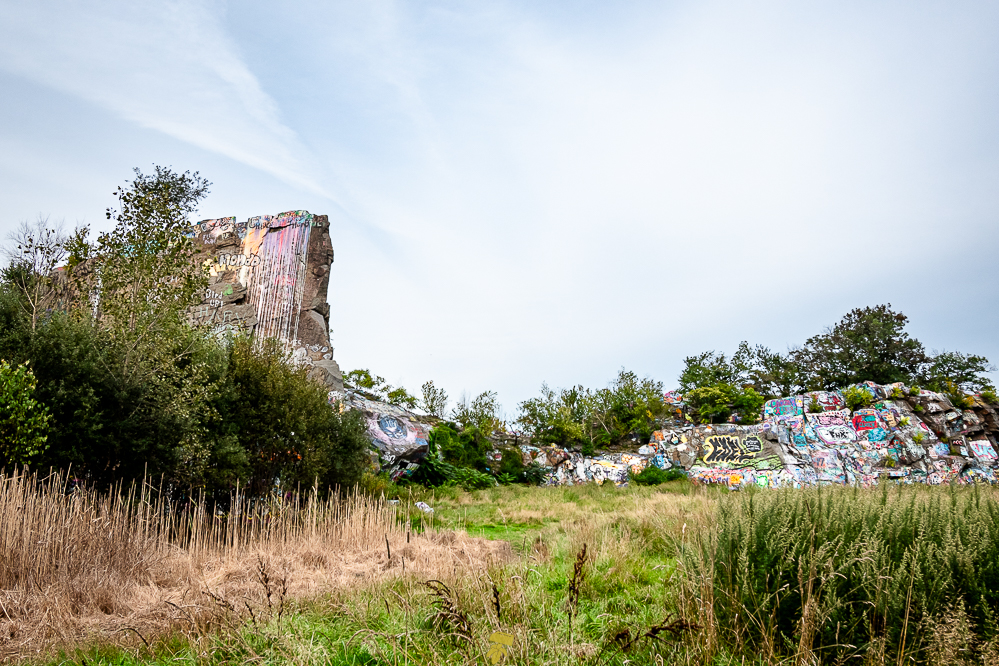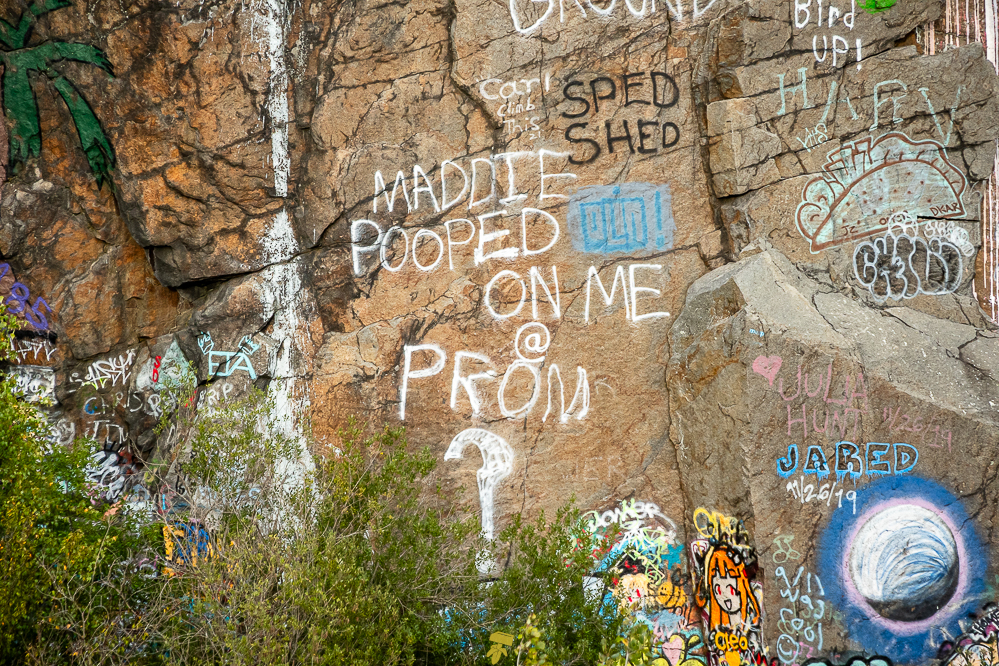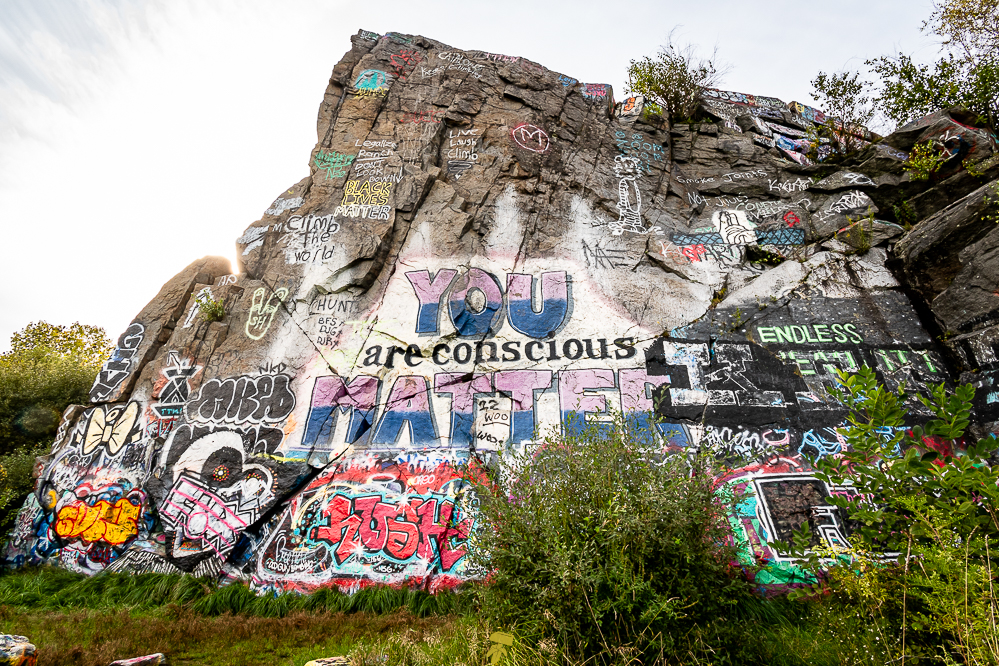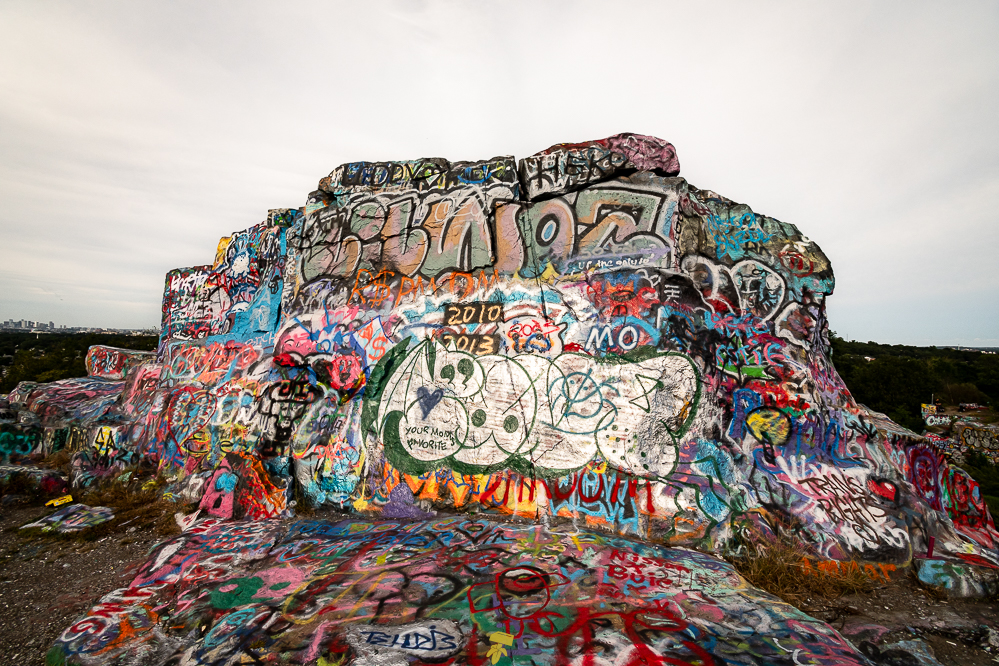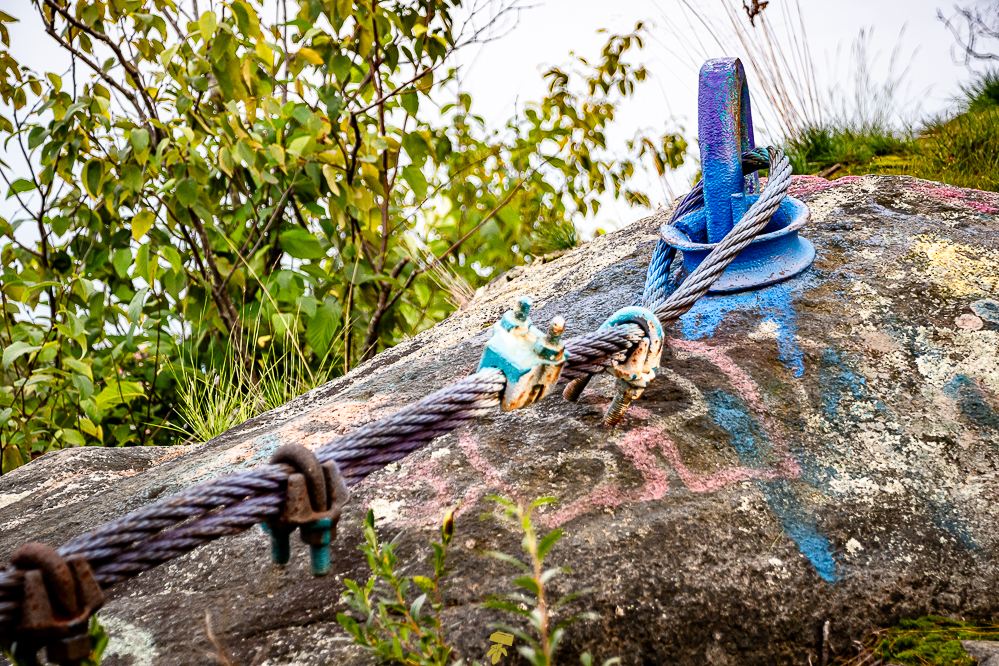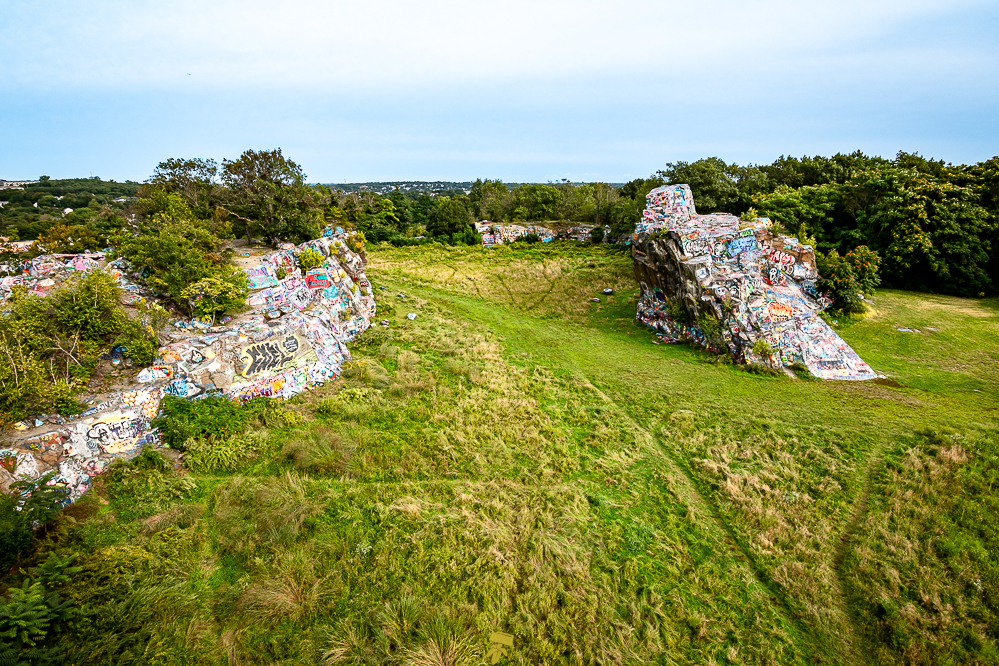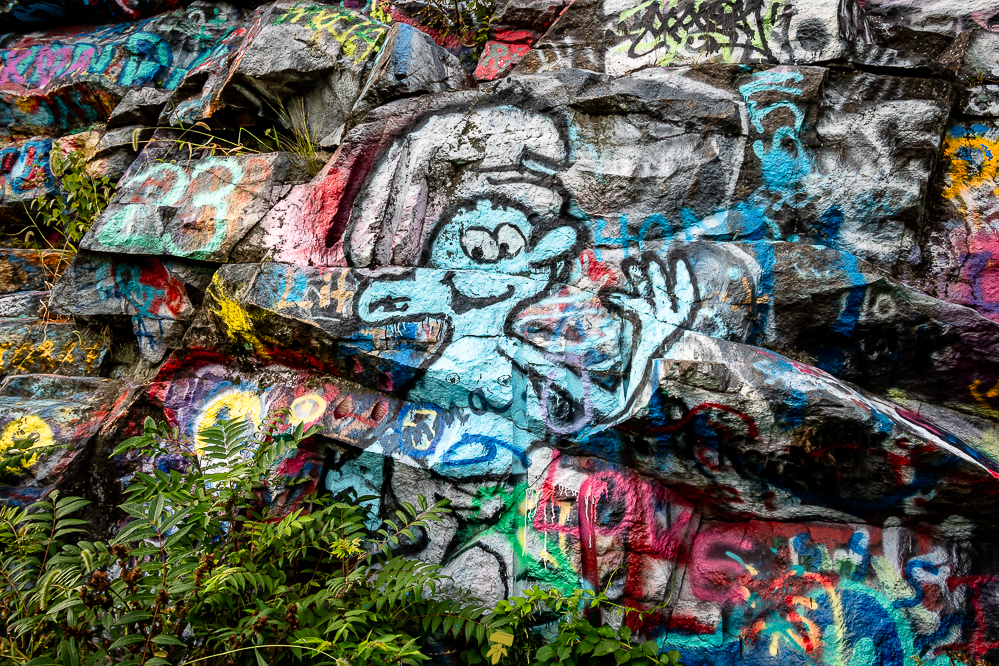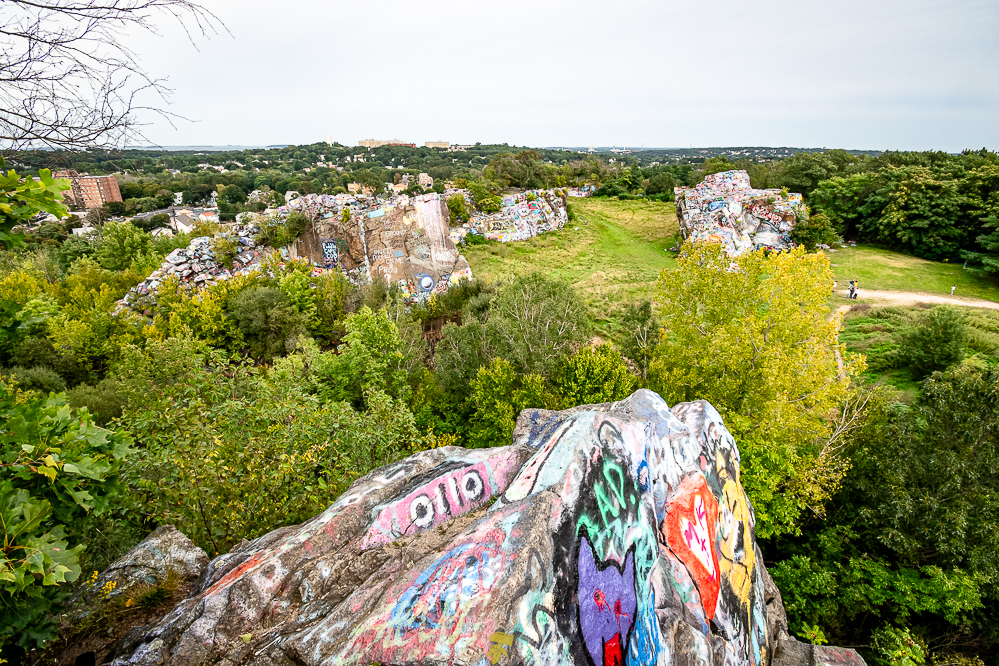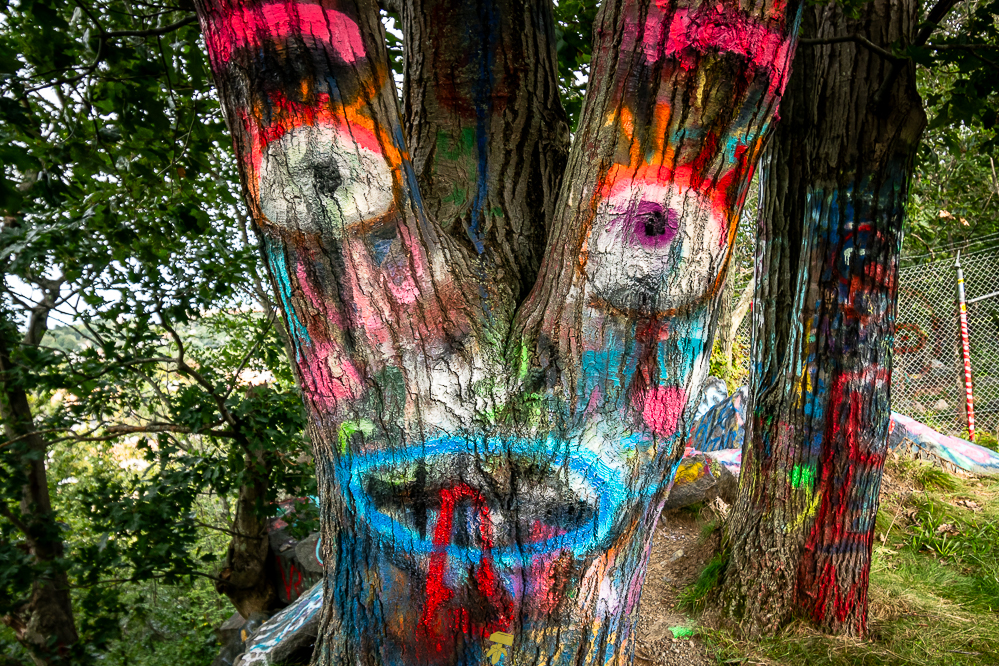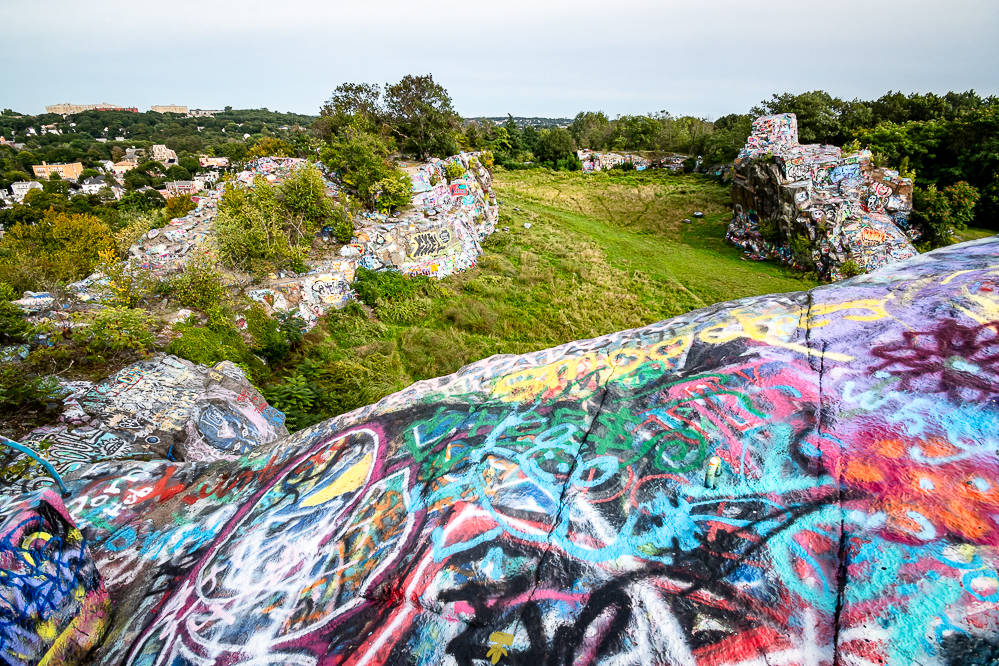Granite from this former south of Boston quarry was used to build the Bunker Hill Monument. The location, though being a historical site, is an area favorite for graffiti enthusiasts and rock climbers. A place with so much character, scenes from the movies Gone Baby Gone (2007) and The Invention of Lying (2009) were filmed in the Quincy Quarries.
Located a mere ten miles south of Boston is a former quarry, one that is considered to be the birthplace of large-scale granite quarrying in the United States. Producing granite for over a century (1825-1963), the Quincy Quarries in Quincy, Massachusetts is also the site of the Granite Railway, one of the first railroads in the country. “Quincy Granite” was valued for its dark color, extreme hardness, and ability to take a high polish. Over the course of 140 years, there we more than 50 different granite quarries within the city, earning the name “Granite City.”
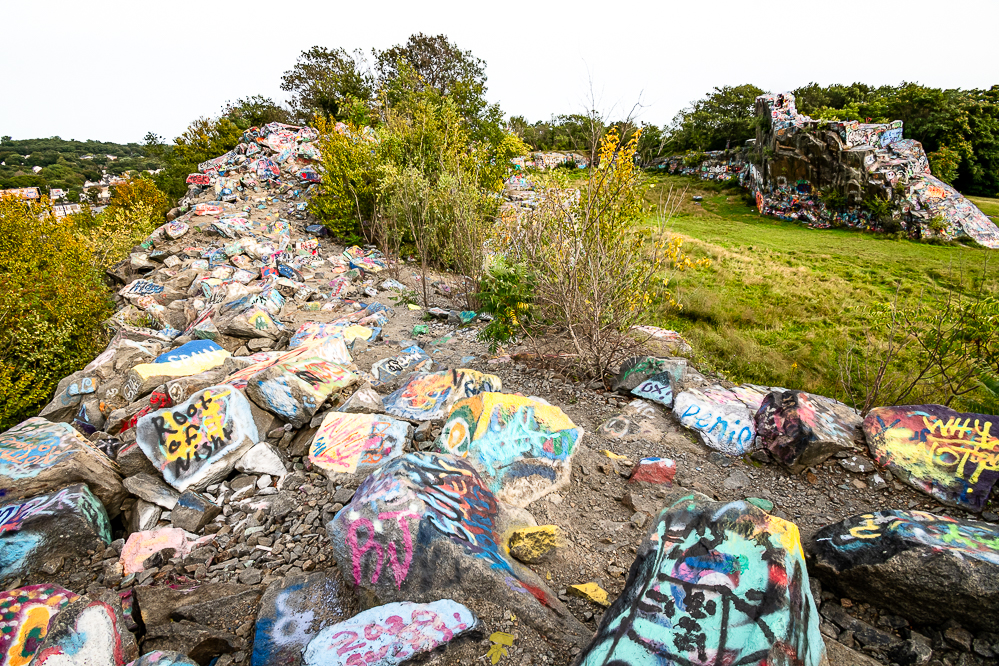
“Father of the Granite Industry” Solomon Willard was the first to establish a quarry in 1825 in West Quincy after he was chosen to design and oversee the construction of the Bunker Hill Monument. After an extensive search throughout New England, he chose the site of the Quincy Quarries to source the granite to be used. A year later the first commercial railway in the United States was built to transport the stone blocks to a dock on the Neponset River, the Granite Railway. From here the slabs would be brought by boat to the wharves of Charlestown then to the site of the monument.
The historic Granite Railway Quarry, initially known as Pine Hill Ledge, opened in 1830 and was actively quarried until the early 1940s. Many of the quarries shut down throughout the 1920s and 1930s with the last quarry in “Granite City” to close in 1963. Inactive quarries usually fill with water from rainfall and through the ground by seeping through fissures and cracks. Water-filled quarries often become popular spots for swimming and cliff jumping, which can be dangerous. The state of Massachusetts purchased 22 acres of land that included the Granite Railway Quarry in 1985.
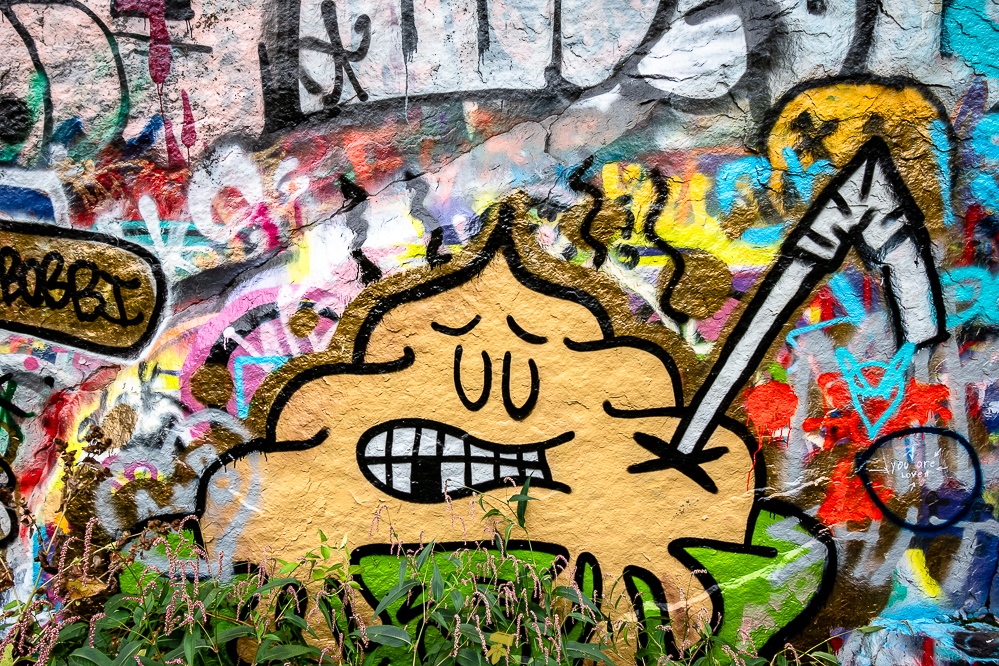
The depths of the Granite Railway Quarry reached nearly 300 feet and posed quite a public safety threat. In the 1970s-1980s, local officials dumped telephone poles and trees into some of the water-filled quarries in an effort to prevent swimming, this was later considered to be a mistake by adding more risk to an already menacing place. The debris would become waterlogged and sink just below the surface of the water making the hazards not visible to cliffjumpers above.
Reportedly there have been a total of 52 deaths ranging from accidental falls, drowning, and even murder to occur at the quarry, not to mention hundreds of injuries, and was nicknamed “the death quarry.” The spot was formerly an infamous dumping spot for criminals stashing evidence, weapons, and even dead bodies. It has been lowered twice for body searches.
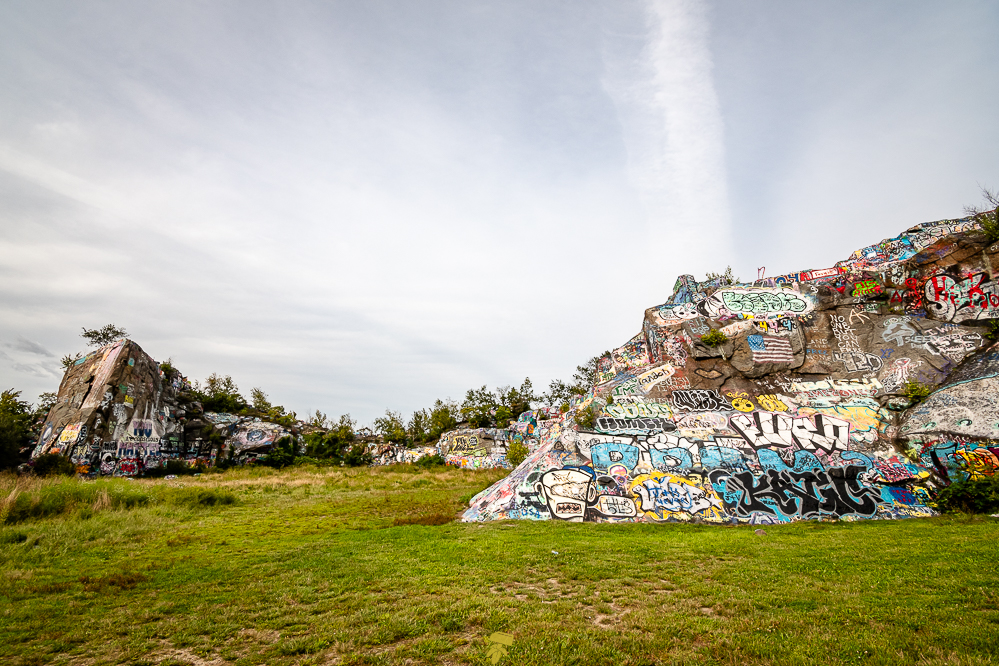
When one teen after a night of drinking fell to his death, then, a body of a teen girl was found weighted down in one of the quarries, both occurring in 1994, the Commonwealth of Massachusetts drained the quarry to the bottom in 1999. No additional bodies were found at that time. Dirt, approximately 800,000 tons, from the Big Dig highway project would be used to fill the gaps.
Quincy Quarries Reservation would open to the public in 2003, reigniting the interest in rock climbing, which had become popular here since the 1960s, by opening up new sections. The trails lead you around ponds, up ledges, down crevices, and through grassy fields. Some trails are more difficult than others, but if you can make it up to the higher points, there are great views of the Boston skyline. Most of the rock face is a morphing body of modern art via spray paint and markers, but if you follow the trails they will take you to more natural settings. Blue Hills Reservation also borders the land.

